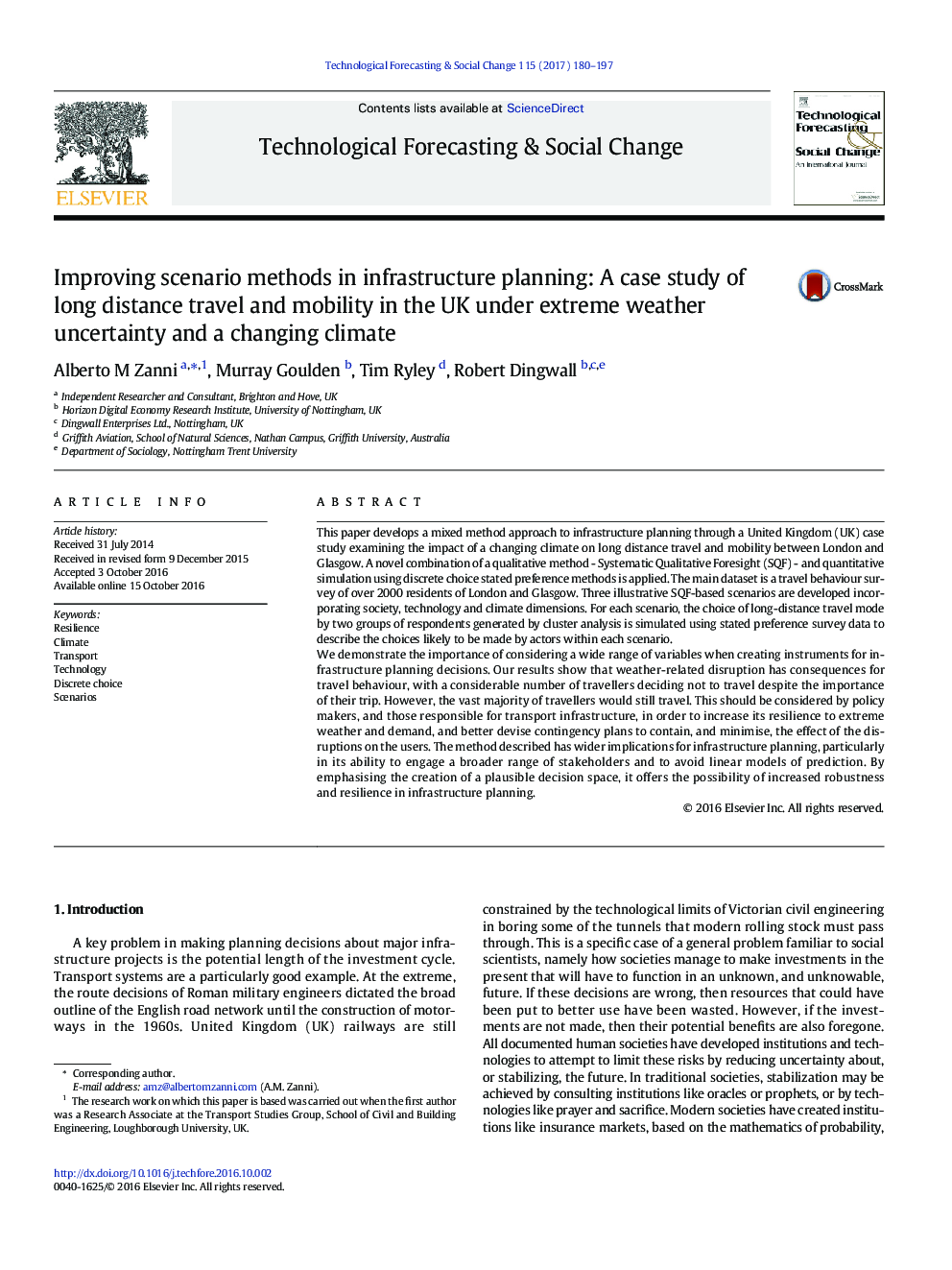| کد مقاله | کد نشریه | سال انتشار | مقاله انگلیسی | نسخه تمام متن |
|---|---|---|---|---|
| 5037125 | 1472386 | 2017 | 18 صفحه PDF | دانلود رایگان |
- We analyse the impact of extreme weather on long distance travel and mobility.
- We apply a novel combination of qualitative and quantitative methods.
- A large range of variables is necessary for planning decisions.
- Most travellers would decide to travel nonetheless.
- Infrastructure resilience needs to improve to absorb demand.
This paper develops a mixed method approach to infrastructure planning through a United Kingdom (UK) case study examining the impact of a changing climate on long distance travel and mobility between London and Glasgow. A novel combination of a qualitative method - Systematic Qualitative Foresight (SQF) - and quantitative simulation using discrete choice stated preference methods is applied. The main dataset is a travel behaviour survey of over 2000 residents of London and Glasgow. Three illustrative SQF-based scenarios are developed incorporating society, technology and climate dimensions. For each scenario, the choice of long-distance travel mode by two groups of respondents generated by cluster analysis is simulated using stated preference survey data to describe the choices likely to be made by actors within each scenario.We demonstrate the importance of considering a wide range of variables when creating instruments for infrastructure planning decisions. Our results show that weather-related disruption has consequences for travel behaviour, with a considerable number of travellers deciding not to travel despite the importance of their trip. However, the vast majority of travellers would still travel. This should be considered by policy makers, and those responsible for transport infrastructure, in order to increase its resilience to extreme weather and demand, and better devise contingency plans to contain, and minimise, the effect of the disruptions on the users. The method described has wider implications for infrastructure planning, particularly in its ability to engage a broader range of stakeholders and to avoid linear models of prediction. By emphasising the creation of a plausible decision space, it offers the possibility of increased robustness and resilience in infrastructure planning.
Journal: Technological Forecasting and Social Change - Volume 115, February 2017, Pages 180-197
